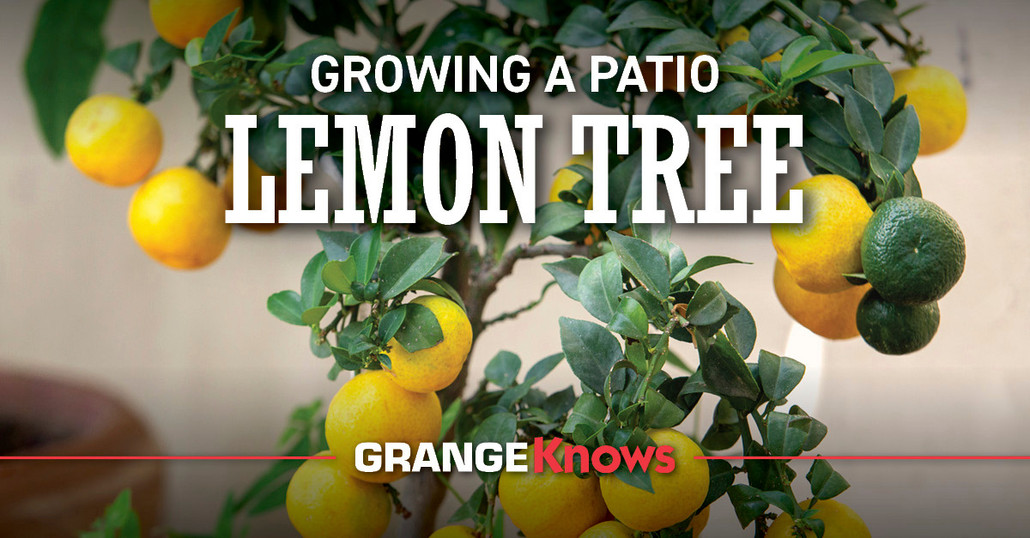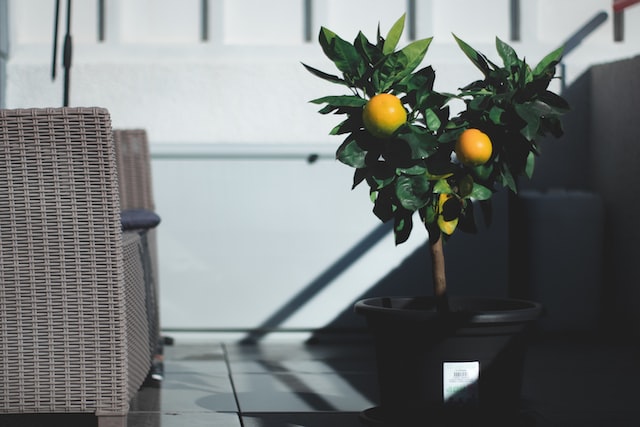
Growing a Patio Lemon Tree
Posted by Grange Co-op on 9th Mar 2023
There are lots of reasons to grow a lemon tree indoors. Naturally, many people grow a lemon tree for delicious and versatile fruit. You can use your harvest in all kinds of sweet or savory recipes, to clean with, or as decoration. Another reason that some people find just as powerful is the beautiful, fragrant flowers. They can make your home smell like spring during wintertime!
What You Need to Grow a Lemon Tree in a Pot
1. Choose Your Lemon Tree
The most popular lemon tree for growing in a pot is the Meyer Lemon. These trees are easy to care for if you provide some simple basic needs. Check your local grocery store or gardening center.
You only need one tree since citrus trees are self-pollinating. If you opt to plant more than one, consider how much indoor space you have. Depending on your climate, you may need to move your patio trees indoors during the winter.
2. Choose a Pot or Planter
You can use a wide variety of pots or planters as long as they have drainage holes. A clay pot is a good choice, but you might want something more decorative for your home or patio. Start with a smaller pot that is about 12” in diameter and repot every two to three years as your tree matures. Once the lemon tree is fully grown, you will need a pot that is at least 18” in diameter to provide ample room for the roots to grow.
If you plan to move your lemon tree from the patio to indoors, a caddie will make the job easier. It also helps keep the pot off your floor or deck to prevent damage. If the pot doesn’t come with a saucer, purchase one in the appropriate size to catch water as it drains.
3. Transplant the Tree
Remove the tree from the casing or pot and place it in your new planter. Add well-draining potting soil to fill the planter one or two inches below the top. Pack the soil down with your hands or a garden trowel.
4. Add Water and Fertilizer

Adding water and a good-quality citrus fertilizer will help prevent transplant shock and get your newly transplanted tree growing. Follow the instructions on the fertilizer for plants in containers. Add water until it just covers the surface of the soil.
5. Protect Your Tree From Cold Weather
If you don’t want to grow a lemon tree indoors year-round, it can stay on your patio in full sun during the warmer months. Once temperatures begin to cool, you need to bring the tree indoors and put it in front of a window where it will get a lot of sunlight.
Although most lemon trees can withstand a mild freeze, it’s better to avoid exposure if possible. If you live in a mild climate, you might opt to leave your lemon tree on your patio. But when temperatures drop to forty degrees Fahrenheit or below, you shouldn’t take the risk.
6. Provide Ongoing Care
You will need to fertilize your tree three or four times each year. Space these times out evenly for best results.
Check the soil for moisture weekly. If it feels dry a couple of inches below the surface, it’s time to add more water. Slowly add water until you see it begin draining out the bottom of the pot. The goal is to moisten the soil, not saturate it. You should also use a plant mister to spray leaves daily and keep the foliage fresh.
Prune the tree regularly to maintain its shape and strength. Cut away branches that can’t support fruit and new growth at the bottom of the stem. You might need to use organic, non-toxic pesticides to keep pests away such as aphids and citrus rust mites. The simplest approach is to make your own using all-natural ingredients.
7. Aid With Pollination
When you grow a lemon tree indoors or bring it inside during cold weather, there aren’t any bees to pollinate. While the Meyer Lemon tree doesn’t need pollen from another tree to produce fruit, it does need the pollen spread from one bloom to the next.
To solve this problem, use a cotton swab and gently place it inside one of the blooms. Swirl the swab to collect the pollen. Repeat the process on the other tree blooms.

8. Harvest Your Fruit
Good things come to those who wait — and that couldn't be more true with your lemon tree! It won’t begin to bear fruit until it is between 3 and 5 years of age or longer. Once your tree reaches maturity, it should bloom during fall and early spring. The fruit grows once or twice each year, with the most abundant harvest usually occurring in the fall and winter.
Harvest your lemons as they develop. It can take several months for the fruit to reach maturity. They will reach a deep yellow color and become somewhat soft when they are ready to pick.
Keep Your Lemon Tree Healthy With Products From Grange Co-op
It doesn’t require a lot to grow a lemon tree indoors or on your patio. But it does take the right products to help it grow strong and bear fruit. You can count on Grange Co-op for the pots and planters, gardening tools, fertilizers, and garden soil to keep your lemon tree healthy and strong. Contact us if you have questions about our products or our store locations.
